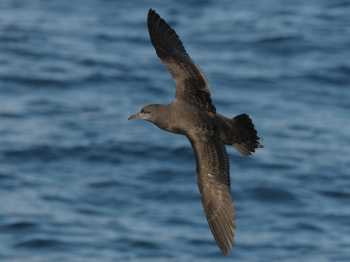Alaa El-Din Bekhit of the Department of Food Science, Division of Sciences, University of Otago, Dunedin, New Zealand and colleagues, writing in the journal Ecotoxicology and Environmental Safety have looked at levels of organochlorines and various elements in Sooty Shearwaters (a potential candidate for ACAP listing) sold for human consumption. They conclude that "Mutton bird meat is high in essential nutrient elements and of low toxicological risk".
The paper's abstract follows: "The Sooty Shearwater (Puffinus griseus, commonly known as Mutton bird) is a migratory wild seabird, annually harvested for food by certain native groups in New Zealand and Australia and in many parts of the world. The concentrations of 22 elements and several organochlorine pesticides [2,2-bis(chlorophenyl)-1,1,1-trichloroethane (DDT), its derivatives dichlorodiphenyldichloroethene (DDE) and dichlorodiphenyldichloroethane (DDD), aldrin, chlordane, dicofol, lindane, and methoxychlor] in Mutton bird were determined over two consecutive years to evaluate its safety for human consumption. Twenty bird carcasses were purchased in each of 2007 and 2008 from a local source. No significant year effect (P>0.05) was found in the following nine trace elements: Al, As, Cd, Co, Cr, Cu, Ni, Pb and Se. The concentrations of Hg, Li and Na were higher (P<0.05) in 2008 samples compared to 2007. The toxic trace elements (mg/kg wet weight) in all the samples were below the maximum residual level (MRL). The concentration of Fe, Ca and Se in Mutton bird was higher than that in domestic land animal meats reported in literature. The residual organochlorine concentrations were all below the recommended MRL. Thus Mutton bird meat is high in essential nutrient elements and of low toxicological risk. Due to active use of agrochemical in New Zealand, a monitoring program for contaminants in Mutton birds is recommended." Reference: El-Din Bekhit, A., Al-Amer, S., Gooneratne, R., Mason, S.L., Osman, K.A. & Clucas, L. 2011. Concentrations of trace elementals and
organochlorines in Mutton bird (Puffinus griseus). Ecotoxicology and Environmental Safety 74: 1742-1746.

John Cooper, ACAP Information Officer, 22 August 2011

 English
English  Français
Français  Español
Español